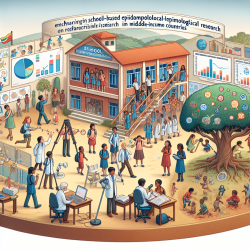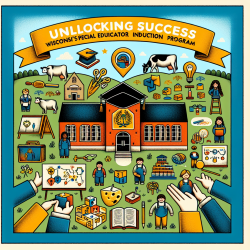Introduction
The 2020 global pandemic has not only reshaped our understanding of public health but also highlighted the urgent need for conservation efforts, particularly for amphibians in Eastern Asia. As a Special Education Director in a school district, I often draw parallels between the challenges in education and those in wildlife conservation. Both fields require adaptive strategies, leadership, and community engagement to thrive. In this blog, we explore how the outcomes of recent research can inspire practitioners to enhance their skills and contribute to amphibian conservation efforts.
The Research Findings
The research article titled "Using the 2020 global pandemic as a springboard to highlight the need for amphibian conservation in eastern Asia" provides a comprehensive overview of the challenges and opportunities in amphibian conservation. The pandemic has increased public awareness about zoonotic diseases, leading to regulatory changes in wildlife trade. However, amphibians remain largely unprotected despite their crucial role in controlling disease vectors and maintaining ecological balance.
Key Recommendations for Practitioners
- Restrict Amphibian Farming: Implement restrictions on amphibian farming to prevent pathogen transmission and the establishment of invasive species.
- Regulate the Amphibian Pet Trade: Focus on regulating potential vector species to reduce the risk of zoonoses and protect native populations.
- Expand Wildlife Trade Bans: Extend current wildlife trade bans to include amphibians, limiting the wildlife-human-pet interface and promoting environmental protection.
Implementing Research Outcomes
As educators and conservationists, we can leverage these research outcomes to improve our practices. Here are some actionable steps:
- Stay Informed: Regularly attend conferences, webinars, and read publications to stay updated on the latest conservation strategies.
- Collaborate: Network with other professionals and organizations to share resources and strategies for effective conservation efforts.
- Advocate: Engage with policymakers and the community to advocate for stronger regulations and conservation measures.
Encouraging Further Research
The research underscores the need for ongoing studies to better understand amphibian species richness and their ecological roles. Practitioners are encouraged to contribute to research efforts, whether through direct participation or by supporting initiatives that aim to fill knowledge gaps in amphibian conservation.
Conclusion
The pandemic has provided a unique opportunity to reassess and strengthen our conservation efforts. By implementing the research outcomes and encouraging further studies, we can make significant strides in protecting amphibians and, by extension, our ecosystems. To read the original research paper, please follow this link: Using the 2020 global pandemic as a springboard to highlight the need for amphibian conservation in eastern Asia.










